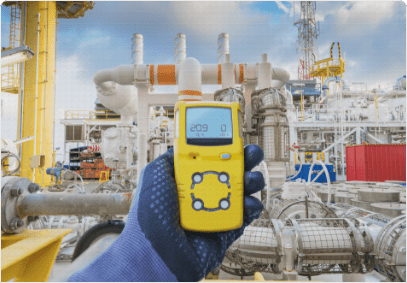Roar Solutions for Beginners
Roar Solutions for Beginners
Blog Article
The smart Trick of Roar Solutions That Nobody is Talking About
Table of ContentsIndicators on Roar Solutions You Need To KnowSee This Report on Roar SolutionsRoar Solutions for Dummies
In order to shield setups from a prospective surge a method of analysing and categorizing a potentially hazardous location is required. The purpose of this is to make certain the correct choice and installment of devices to eventually stop a surge and to make sure security of life.
(https://roarsolutions.carrd.co/)
No tools ought to be mounted where the surface area temperature level of the tools is above the ignition temperature level of the offered risk. Below are some typical dirt dangerous and their minimal ignition temperature. Coal Dust 380C 225C Polythene 420C (thaws) Methyl Cellulose 420C 320C Starch 460C 435C Flour 490C 340C Sugar 490C 460C Grain Dust 510C 300C Phenolic Resin 530C > 450C Aluminium 590C > 450C PVC 700C > 450C Soot 810C 570C The possibility of the danger being present in a concentration high sufficient to cause an ignition will vary from location to area.
In order to categorize this risk a setup is divided into areas of threat depending upon the amount of time the hazardous is existing. These locations are referred to as Areas. For gases and vapours and dirts and fibers there are three areas. Zone 0 Area 20 A hazardous environment is very most likely to be existing and may exist for extended periods of time (> 1000 hours annually) and even continuously Zone 1 Area 21 A dangerous ambience is feasible but not likely to be present for extended periods of time (> 10 450 C [842 F] A category of T6 suggests the minimal ignition temperature is > 85 C [185 F] Unsafe area electrical equipment maybe developed for use in greater ambient temperature levels. This would certainly showed on the rating plate e.g. EExe II C T3 Ta + 60C( This means at 60C ambient T3 will not be exceeded) T1 T1, T2, T3, T4, T5, T6 T2 T2, T3, T4, T5, T6 T3 T3, T4, T5, T6 T4 T4, T5, T6 T5 T5, T6 T6 T6 A T Course rating of T1 indicates the optimum surface temperature level created by the instrument at 40 C is 450 C. Thinking the linked T Course and Temperature level ranking for the equipment are suitable for the location, you can always make use of an instrument with a much more stringent Division score than needed for the area. There isn't a clear solution to this inquiry however. It really does depend upon the kind of tools and what repair services require to be carried out. Equipment with specific test procedures that can't be performed in the area in order to achieve/maintain 3rd party ranking. Have to come back to the factory if it is prior to the equipment's service. Field Repair Work By Authorised Employee: Complicated testing might not be needed nevertheless details procedures may need to be complied with in order for the tools to keep its 3rd party rating. Authorised personnel have to be used to do the job correctly Fixing must be a like for like replacement. New component have to be taken into consideration as a direct additional resources substitute needing no special testing of the equipment after the repair is full. Each tool with a harmful rating should be evaluated separately. These are described at a high level below, however, for more thorough details, please refer directly to the standards.
Roar Solutions for Dummies
The devices register is a detailed data source of devices documents that consists of a minimum collection of areas to determine each thing's area, technical parameters, Ex-spouse category, age, and environmental information. The proportion of Detailed to Close evaluations will be established by the Tools Risk, which is evaluated based on ignition threat (the likelihood of a resource of ignition versus the likelihood of a combustible environment )and the hazardous area category
( Zone 0Area 1, or 2). Implementing a durable Risk-Based Evaluation( RBI )method is vital for making certain conformity and safety in managing Electric Devices in Hazardous Locations( EEHA).
The Best Guide To Roar Solutions

In regards to eruptive risk, a dangerous location is an atmosphere in which an explosive environment exists (or might be expected to be present) in amounts that need unique safety measures for the building and construction, installment and usage of tools. Roar Solutions. In this write-up we discover the challenges dealt with in the office, the risk control procedures, and the required competencies to function securely
It is a repercussion of modern life that we produce, keep or take care of a series of gases or liquids that are regarded flammable, and a series of dirts that are regarded flammable. These compounds can, in certain conditions, form explosive atmospheres and these can have major and awful consequences. Many of us know with the fire triangular remove any type of one of the 3 elements and the fire can not happen, yet what does this mean in the context of hazardous areas? When damaging this down right into its simplest terms it is essentially: a mix of a particular quantity of launch or leakage of a certain substance or material, combining with ambient oxygen, and the visibility of a resource of ignition.
In many instances, we can do little regarding the levels of oxygen in the air, yet we can have substantial influence on resources of ignition, for instance electrical devices. Harmful locations are recorded on the dangerous location category drawing and are recognized on-site by the triangular "EX LOVER" indicator. Right here, amongst other crucial info, zones are split into 3 types depending on the hazard, the likelihood and period that an explosive environment will exist; Area 0 or 20 is regarded the most harmful and Zone 2 or 22 is regarded the least.
Report this page